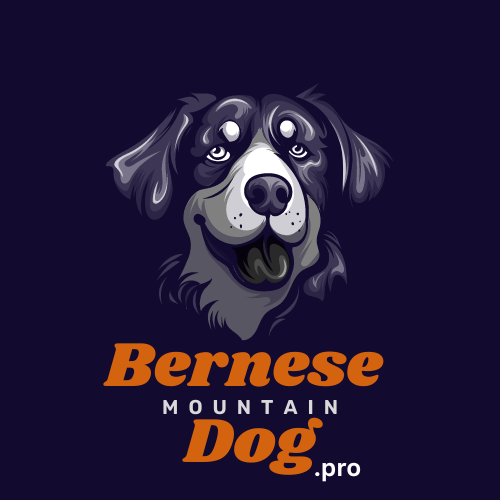No, Bernese Mountain Dogs do not have webbed feet like some other water-loving breeds. This is because they were bred for working in the mountains, herding livestock, and pulling carts rather than for water-based activities such as swimming or retrieving.
The Paw Structure of Bernese Mountain Dogs

Bernese Mountain Dogs have large, well-padded paws that are well-suited for walking on rough terrain and providing good traction on slippery surfaces. While some Bernese Mountain Dogs may have slightly webbed toes, this is not a breed standard and is not as pronounced as in water breeds.
Their paw structure is designed to help them navigate snowy terrains and withstand cold weather, making them excellent working dogs in the mountains. The large, sturdy paws provide stability and support, allowing them to traverse rocky, uneven ground with ease.
Comparison to Water-Loving Breeds

Breeds like Labrador Retrievers and Newfoundlands, which are known for their water-loving abilities, have more pronounced webbing between their toes. This webbing helps them propel themselves through the water and makes them excellent swimmers.
In contrast, Bernese Mountain Dogs are not primarily bred for water-based activities. Their paws are not as heavily webbed, as they are not required to spend as much time in the water. Instead, their paw structure is optimized for their primary roles as working dogs in the mountains.
Coat Characteristics and Adaptations
In addition to their paw structure, Bernese Mountain Dogs are also well-adapted to their mountainous environment through their thick, double-layered coat. This coat helps insulate them from the cold temperatures and harsh weather conditions they may encounter while working in the Swiss Alps.
The outer coat is made up of long, straight, and coarse hairs, while the undercoat is soft and dense. This combination of layers provides excellent protection against the elements, allowing Bernese Mountain Dogs to thrive in their natural habitat.
The History and Origins of Bernese Mountain Dogs
Bernese Mountain Dogs, also known as Berner Sennenhunde, have their origins in the Swiss Alps. They were originally bred as working dogs, tasked with a variety of duties such as herding livestock, pulling carts, and guarding farms.
These dogs were prized for their strength, intelligence, and adaptability to the rugged mountain terrain. Their physical characteristics, including their large size, muscular build, and thick coat, were well-suited for the demands of their work.
The Versatility of Bernese Mountain Dogs
While Bernese Mountain Dogs are not known for their water-based abilities, they are highly versatile and can excel in a variety of other activities. They are often used as therapy dogs, service dogs, and companions, thanks to their gentle, affectionate nature and eagerness to please.
Bernese Mountain Dogs can also participate in various dog sports, such as obedience, agility, and tracking. Their intelligence and trainability make them well-suited for these activities, allowing their owners to explore their full potential.
Grooming and Maintenance
Maintaining a Bernese Mountain Dog’s coat can be a bit of a challenge, as their thick, double-layered fur requires regular brushing and grooming. They tend to shed heavily, especially during the spring and fall seasons, and their coats may require more frequent bathing to keep them looking their best.
Despite the grooming demands, many Bernese Mountain Dog owners find the process to be a rewarding bonding experience with their furry companions. Proper grooming not only keeps the dog’s coat healthy but also helps to prevent matting and reduce the amount of shedding in the home.
Health Considerations
Like any breed, Bernese Mountain Dogs are susceptible to certain health conditions. Some common issues include hip and elbow dysplasia, cancer, and neurological disorders. Regular veterinary check-ups and preventive care are essential to maintaining the health and well-being of these gentle giants.
Prospective Bernese Mountain Dog owners should research the breed’s health concerns and be prepared to provide the necessary care and attention to ensure their dog’s longevity and quality of life.
Conclusion
In conclusion, Bernese Mountain Dogs do not have webbed feet like some other water-loving breeds. Their large, well-padded paws are designed for navigating the rugged terrain of the Swiss Alps, where they were originally bred as working dogs. While they may not be as adept at swimming, Bernese Mountain Dogs are highly versatile and can excel in a variety of other activities, making them beloved companions for many families.
References:
1. https://www.hepper.com/do-bernese-mountain-dogs-have-webbed-feet/
2. https://www.dogster.com/lifestyle/does-bernese-mountain-dog-have-webbed-feet
3. https://www.youtube.com/watch?v=ZYd_Dpcrcfo

Sarah Johnson
Sarah Johnson is a devoted Bernese Mountain Dog enthusiast and regular contributor to Bernese Mountain Dog Pro. With over a decade of experience in raising and training Berners, Sarah brings practical knowledge and passion to her writing. Sarah lives in Colorado with her two Berners, Max and Bella.